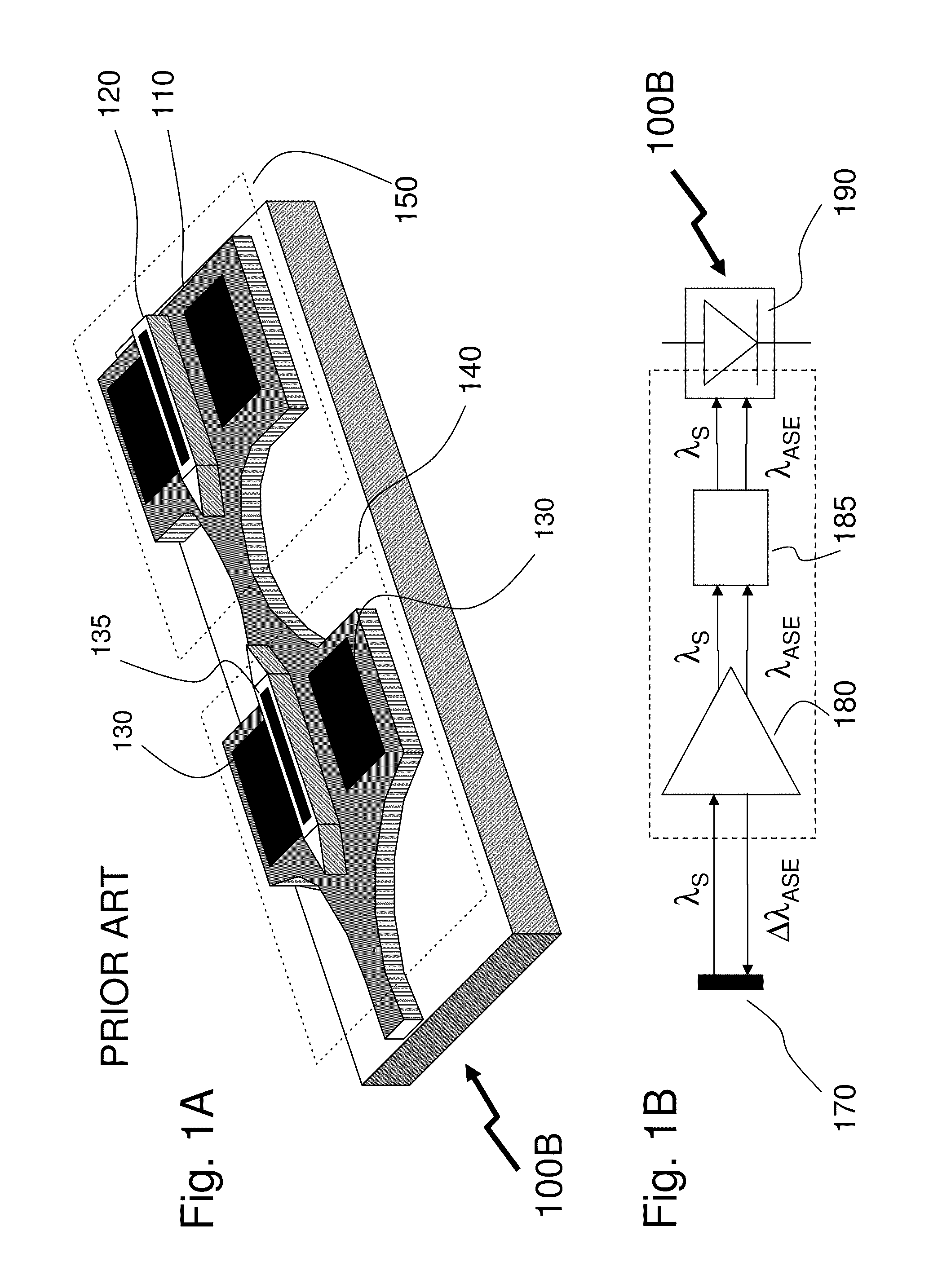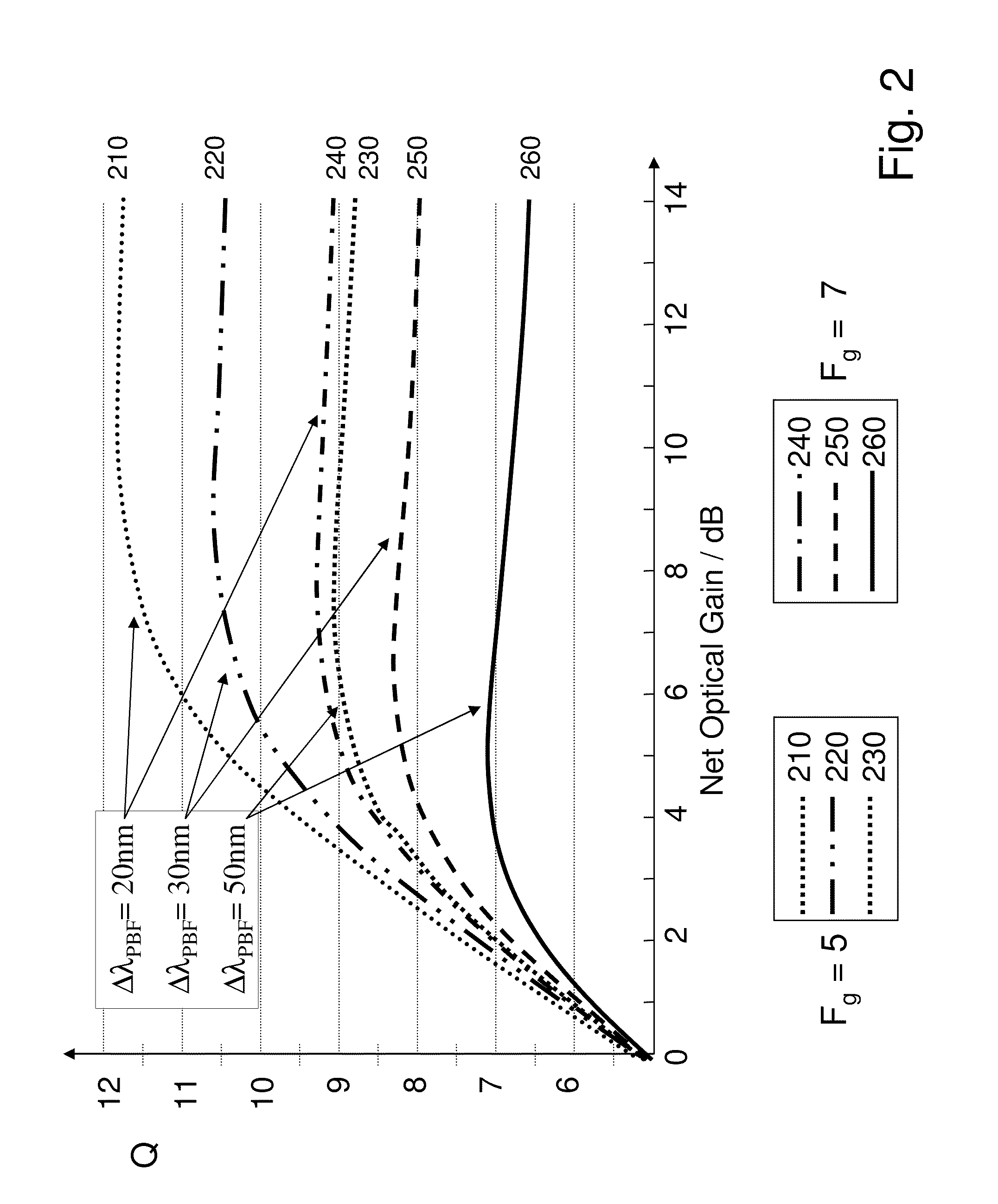Waveguide Optically Pre-Amplified Detector with Passband Wavelength Filtering
a wavelength filtering and waveguide technology, applied in lasers, electromagnetic transmission, transmission, etc., can solve the problems of increasing labor-intensive optical alignment, increasing the cost of volume scalability in manufacturing such components, and increasing so as to improve the responsivity of e/ receivers, the effect of reducing the impact of ase related noise on the sensitivity of opad based receivers
- Summary
- Abstract
- Description
- Claims
- Application Information
AI Technical Summary
Benefits of technology
Problems solved by technology
Method used
Image
Examples
Embodiment Construction
[0046]The present invention is directed to an integrated optically pre-amplified detector (OPAD) with a passband wavelength filter between amplification and detection sections of the device, which filter is intended to reduce an impact of amplified spontaneous emission generated in the amplification section of the device on broadband noise generated in the detection section of the device, thereby enhancing signal to noise ratio in and improving performance of an optical receiver featuring optically pre-amplified detector.
[0047]Reference may be made below to specific elements, numbered in accordance with the attached figures. The discussion below should be taken to be exemplary in nature, and not as limiting of the scope of the present invention. The scope of the present invention is defined in the claims, and should not be considered as limited by the implementation details described below, which as one skilled in the art will appreciate, can be modified by replacing elements with e...
PUM
 Login to View More
Login to View More Abstract
Description
Claims
Application Information
 Login to View More
Login to View More - R&D
- Intellectual Property
- Life Sciences
- Materials
- Tech Scout
- Unparalleled Data Quality
- Higher Quality Content
- 60% Fewer Hallucinations
Browse by: Latest US Patents, China's latest patents, Technical Efficacy Thesaurus, Application Domain, Technology Topic, Popular Technical Reports.
© 2025 PatSnap. All rights reserved.Legal|Privacy policy|Modern Slavery Act Transparency Statement|Sitemap|About US| Contact US: help@patsnap.com



